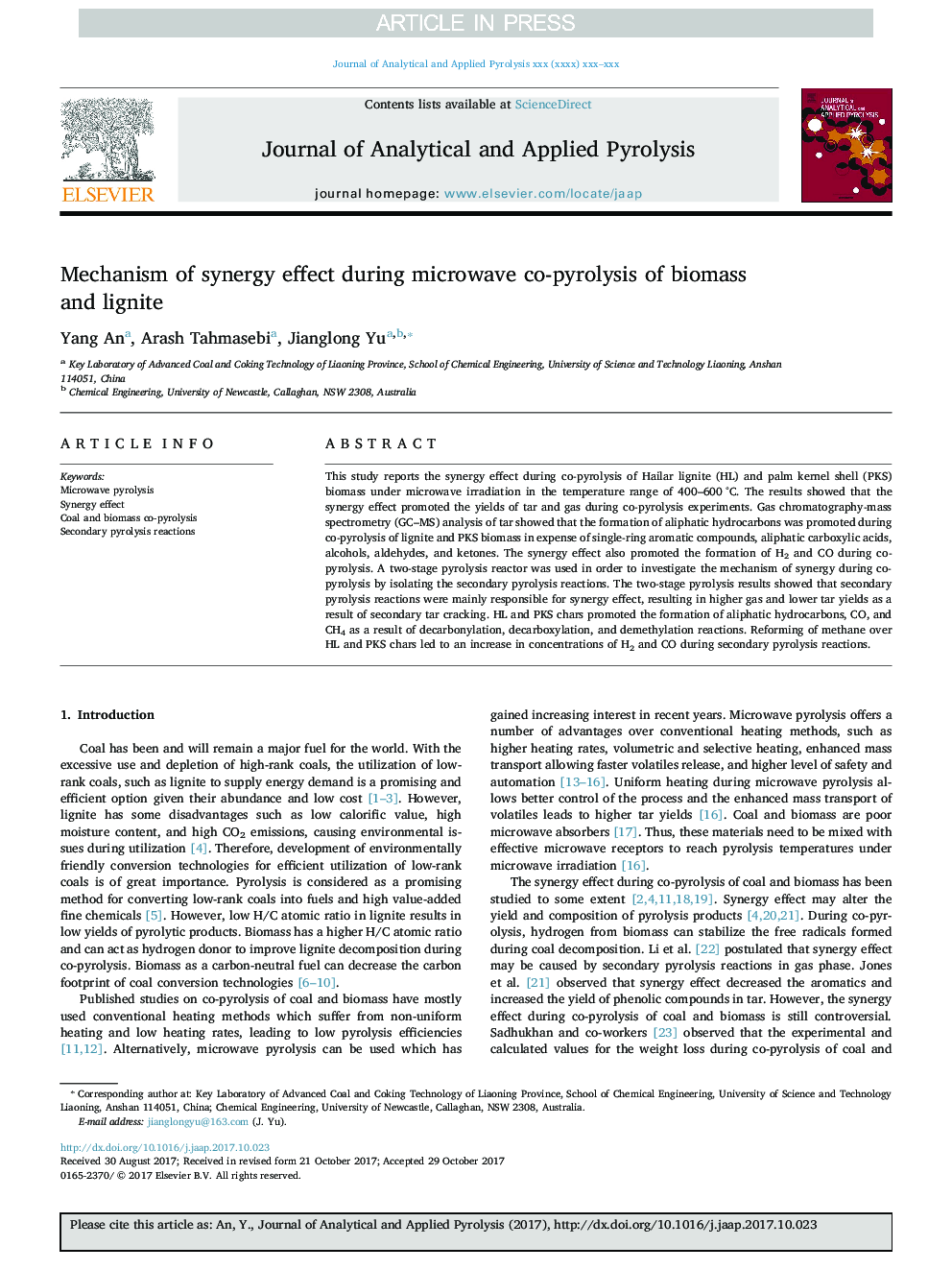| کد مقاله | کد نشریه | سال انتشار | مقاله انگلیسی | نسخه تمام متن |
|---|---|---|---|---|
| 7606430 | 1492949 | 2017 | 8 صفحه PDF | دانلود رایگان |
عنوان انگلیسی مقاله ISI
Mechanism of synergy effect during microwave co-pyrolysis of biomass and lignite
ترجمه فارسی عنوان
مکانیسم اثر هم افزایی در طی کمپیرلیلیس مایکروویو زیست توده و زغال سنگ
دانلود مقاله + سفارش ترجمه
دانلود مقاله ISI انگلیسی
رایگان برای ایرانیان
کلمات کلیدی
پیرولیز مایکروویو، اثر هم افزایی، زغال سنگ و زیست توده کمپیرلیز، واکنش های ثانویه پیررولیز،
موضوعات مرتبط
مهندسی و علوم پایه
شیمی
شیمی آنالیزی یا شیمی تجزیه
چکیده انگلیسی
This study reports the synergy effect during co-pyrolysis of Hailar lignite (HL) and palm kernel shell (PKS) biomass under microwave irradiation in the temperature range of 400-600 °C. The results showed that the synergy effect promoted the yields of tar and gas during co-pyrolysis experiments. Gas chromatography-mass spectrometry (GC-MS) analysis of tar showed that the formation of aliphatic hydrocarbons was promoted during co-pyrolysis of lignite and PKS biomass in expense of single-ring aromatic compounds, aliphatic carboxylic acids, alcohols, aldehydes, and ketones. The synergy effect also promoted the formation of H2 and CO during co-pyrolysis. A two-stage pyrolysis reactor was used in order to investigate the mechanism of synergy during co-pyrolysis by isolating the secondary pyrolysis reactions. The two-stage pyrolysis results showed that secondary pyrolysis reactions were mainly responsible for synergy effect, resulting in higher gas and lower tar yields as a result of secondary tar cracking. HL and PKS chars promoted the formation of aliphatic hydrocarbons, CO, and CH4 as a result of decarbonylation, decarboxylation, and demethylation reactions. Reforming of methane over HL and PKS chars led to an increase in concentrations of H2 and CO during secondary pyrolysis reactions.
ناشر
Database: Elsevier - ScienceDirect (ساینس دایرکت)
Journal: Journal of Analytical and Applied Pyrolysis - Volume 128, November 2017, Pages 75-82
Journal: Journal of Analytical and Applied Pyrolysis - Volume 128, November 2017, Pages 75-82
نویسندگان
Yang An, Arash Tahmasebi, Jianglong Yu,
